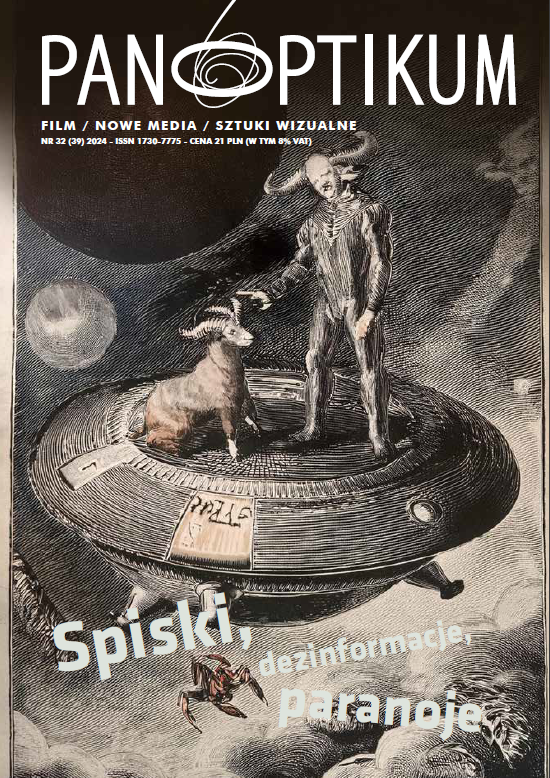O Drive i Lacanowskim spojrzeniu w obliczu teorii Todda McGowana
DOI:
https://doi.org/10.26881/pan.2024.32.13Słowa kluczowe:
Jacques Lacan, Todd McGowan, Drive, Nicolas Winding Refn, real gaze, ideology, realne spojrzenie, ideologiaAbstrakt
The main aim of the article is to present Nicolas Winding Refn’s Drive (2011) through Todd McGowan’s theory of Real gaze. Contrary to traditional Film Theory, based on the mirror-stage, McGowan examines the gaze in Lacanian film theory. McGowan proposes four different types of cinema relationships with the gaze, which according to Lacan’s thought, is a sign of the presence of the Real. The author analyzes Drive, comparing it to McGowan’s types of cinema of fantasy and cinema of intersection. The first type exposes the excess, the second one describes the intersection of desire and fantasy. While referring to the concept of cinema of fantasy the author makes the point that Nicolas Winding Refn overly extends both audiovisual and storytelling components of the movie. Such exposure to an excess leads to the point where a viewer may realize the presence of the gaze. Analysis based on cinema of intersection is built on the point that Drive’s reality is divided between two worlds: fantasy represented by daytime activity between Driver, the protagonist, and his neighbor Irene, and desire represented by Driver’s nighttime activity. The exact moment when those two worlds collide is the moment the gaze is introduced. Both authors’ analyses lead to the final conclusion that Drive can be read as the exposure to its own Hollywoodian fairy-tale facade via gaze.
Downloads
Bibliografia
Child, B. (10.12.2012). Nicolas Winding Refn Is First in Line for Sony’s The Equalizer Remake. https://www.theguardian.com/film/2012/dec/10/nicolas-winding-refn-theequalizer [dostęp: 27.11.2024].
Farmer, B. (2000). Spectacular Passions: Cinema, Fantasy, Gay Male Spectatorships. Durham: Duke University Press.
Lacan, J. (1978). The Four Fundamental Concepts of Psycho-Analysis, przeł. A. Sheridan. New York: Norton.
McGowan, T. (2008). Realne spojrzenie. Teoria filmu po Lacanie, tłum. K. Mikurda. Warszawa: Wydawnictwo Krytyki Politycznej.
McGowan, T. (2016). Capitalism and Desire. New York: Columbia University Press.
Skazany na Film (11.02.2017). Drive: Czy on wygląda na dobrego gościa? YouTube. https://www.youtube.com/watch?v=n6HMc73EVcs [dostęp: 27.11.2024].
Vicari, J. (2014). Nicolas Winding Refn and the Violence of Art. A Critical Study of the Films. Jefferson, Northern California: McFarland & Company, Inc., Publishers.
Vogler, C. (2016). Podroż autora. Struktury mityczne dla scenarzystow i pisarzy, tłum. K. Kosińska. Warszawa: Wydawnictwo Wojciech Marzec.
Žižek, S. (1998). Patrząc z ukosa. „Teksty Drugie: teoria, literatury, krytyka, interpretacja”, nr 1/2(49/50).

 Uniwersyteckie Czasopisma Naukowe
Uniwersyteckie Czasopisma Naukowe









